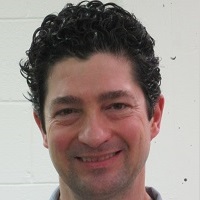5.4: The Temporal Form of the Uncertainty Principle
( \newcommand{\kernel}{\mathrm{null}\,}\)
Empty space can never be completely empty. Particles can spontaneously “pop” into existence and then disappear. Imagine a proton and antiproton spontaneously created from the vacuum with kinetic energy 1.0 MeV each. For how long can these particles exist and how far could they travel in this time?
An analogous argument to the one that led to the spatial form of the uncertainty principle can be made that leads to the temporal form of Heisenberg’s Uncertainty Principle:
(σE)(σt)≥ℏ2
where
- sE is the uncertainty, or variation, in the particle’s total energy,
- and st is the time interval over which the energy was measured.
This form of the uncertainty principle implies that the precise value of the energy of a particle or system can never be known, since the time interval over which the value is measured inversely affects the precision of the measurement. This even applies to a region of space in which the energy is, nominally, zero.
In this example, the energy of a certain region of empty space, naively thought to be equal to zero, spontaneously fluctuates by an amount equal to the total energy of the two created particles. This variation can only last for
(σE)(σt)≥ℏ2
σT≈ℏ2σE
σt≈0.658×10−15 eVs2[2(938 MeV+1.0 MeV)]
σt≈1.8×10−25s
The particle’s speed is given by
KE=(γ−1)mc2
1.0=(γ−1)(938)
γ=1.001066
v=0.046c
In this incredibly short amount of time the particles will be able to travel
d=vt
d=(0.046c)(1.8×10−25)
d=2.4×10−18m
This distance is approximately one-thousandth the width of a single proton. Although this is an incredibly short distance, our modern understanding of the nature of forces and the evolution and fate of the universe depend on the affects of these virtual particles.


